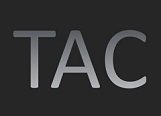SDLC AND AGILE
By Steve Bowler
Many articles have been written about Agile Development at large scale. Some say it doesn't work. I hadn't read those when I took on 35 teams in a software development company.
When I arrived, the incumbent Agile Coach wasn't happy. She'd been there three years, training, coaching, facilitating and measuring. She'd done a great job bringing them along but it's a tough assignment to remain engaged that long. I'd later hit my limit also at three years. She had developed some great metrics charts in Excel spreadsheets that required updating each new Sprint, which was every two weeks. Some teams really got it, others didn't. Her approach was to help those who wanted it and not force it on those who didn't want help. It was probably my background in quality assurance that didn't let me go about it that way. The final product would reflect the lowest common denominator so I needed to get ALL the teams to improve to a higher level.
As the former coach was leaving, I was informed that a co-op student from Northeastern had been assigned to her and by default to me. I had no idea what to do with him as I'm not a software engineer but I did want to convert those spreadsheets to something more automated and online. So I assigned him to learn how to surface the charts in webpages, and connect them to the database where every team stored their work assignment, a kind of homegrown JIRA without the UI part. The engineers around the department were very helpful. Some taught him databases, others user interfaces. The infrastructure guys helped with version control, vaulting and deployment.
The co-op was eager and a fast learner and soon we had the most important burn-down charts online. After he went back to school I received another student and eventually a total of four worked in rotation, one at a time, over a span of nearly 3 years.
By the end we had a complete Product Portfolio Management Dashboard connected to the database, one we could use to forecast and manage product features for each release.
In the meantime, the new coach revamped the training materials and set about re-training and more importantly re-energizing the teams. We devised a quarterly assessment using Survey Monkey where we surveyed over 250 engineering personnel from 35 teams; engineers, product managers, QA, team leads, to rate how they thought they were doing with respect to Agile principles. Each team then provided a plan to improve. Like the technical agile data, the assessment charts were also available online, anonymous to people outside the teams.
When this improvement process began, new feature releases hadn't gone out of this shop in years. Only maintenance releases had shipped. By breaking the releases down into more manageable sizes and deferring incomplete features, we were able to get three releases of new product out per year. There's no question the improved Agile Development Process was a major contributor. We created an all encompassing Software Development Life Cycle presentation which was presented to every engineering department and all new hires. It included the Agile methodology and where it fit in the release process. Now we had a complete SDLC, Agile Development Process, and periodic Survey and Assessment. Time to move on.
Steve Bowler is a Co-Founder of HotChalk, Inc., Inc. an early pioneer in K12 EdTech and an Online Program Manager for Post Secondary Education. He also Co-Founded ProductFactory, Inc., a provider of enterprise Product Portfolio Management that was acquired and a Founder of Venalytica in Consumer Preference Analytics. Steve is an expert in Product Management, Program Management and Agile Development.



